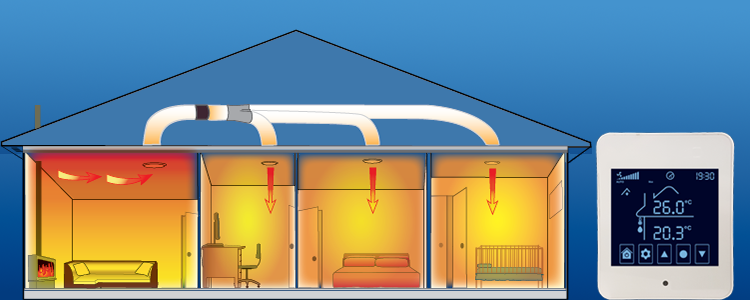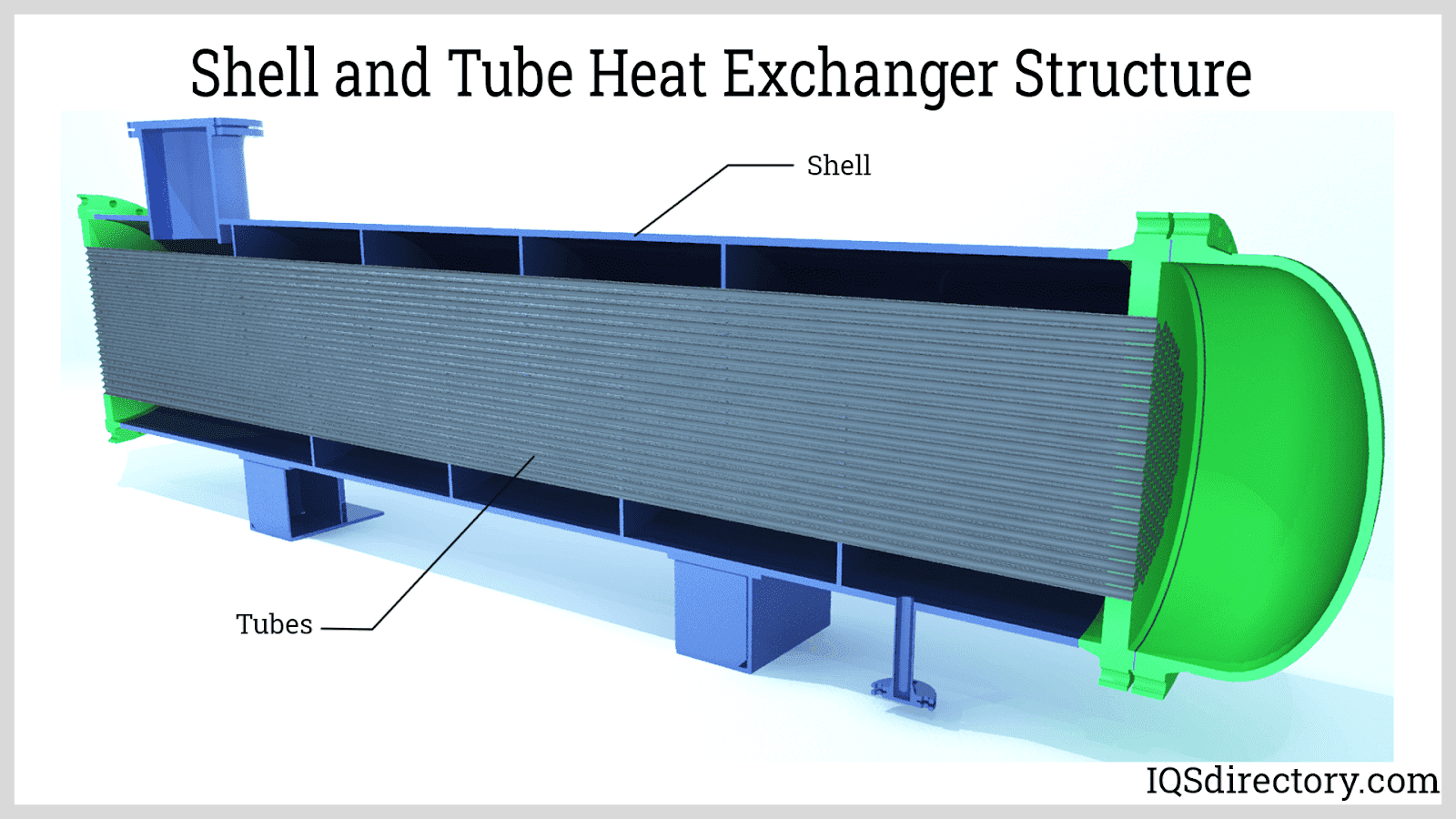What Makes DVS Heat Transfer Systems Ideal for Aerospace Thermal Solutions?
A Comprehensive Guide to Choosing the Right Heat Transfer Solutions for Your Requirements
Choosing the appropriate Heat transfer system is crucial for functional performance. Different systems satisfy different requirements, influenced by elements such as temperature level array and fluid type. Understanding the concepts behind Heat transfer, such as radiation, convection, and transmission, is vital. In addition, assessing power resources and upkeep techniques can influence long-term performance. A closer evaluation of these factors to consider exposes how to tailor a system to details demands. What should one prioritize in this facility decision-making process?
Understanding Heat Transfer: Key Ideas and Principles
Heat transfer may seem like a straightforward principle, it includes a range of principles that are essential for reliable system layout - DVS Heat Transfer Systems. Comprehending these concepts is essential for designers and engineers who aim to optimize thermal efficiency in numerous applications. Conduction, for circumstances, includes the transfer of Heat through solid materials, while convection refers to the motion of Heat within fluids. Radiation, one more essential concept, explains exactly how Heat can be transferred via electro-magnetic waves. Each of these systems plays a vital function in establishing how power moves within a system. By completely understanding these ideas, professionals can make enlightened decisions, making sure that Heat transfer systems operate successfully and fulfill the particular demands of their applications
Sorts Of Heat Transfer Solutions: An Introduction
Understanding the principles of Heat transfer prepares for exploring the various kinds of Heat transfer systems available. Heat transfer systems can be classified primarily into 3 types: convection, radiation, and transmission. Conduction involves Heat transfer via strong products, depending on direct get in touch with between bits. Convection, on the various other hand, happens in fluids (gases and fluids) where the movement of the fluid itself helps with Heat transfer. Radiation involves the transfer of Heat through electro-magnetic waves and does not need a medium, permitting it to occur in a vacuum cleaner. Each sort of system has distinct attributes and applications, making it vital for individuals and companies to very carefully assess their details demands when picking the most ideal Heat transfer solution.
Applications of Heat Transfer Systems in Various Industries
Heat transfer systems play a necessary function across different industries, affecting efficiency and item top quality. In industrial manufacturing processes, they facilitate precise temperature control, while in food and drink handling, they guarantee safety and security and conservation. Furthermore, HVAC and climate control systems count greatly on reliable Heat transfer to maintain comfortable environments.
Industrial Manufacturing Processes

Countless industrial manufacturing processes depend heavily on efficient Heat transfer systems to take full advantage of efficiency and improve item high quality. In markets such as metalworking, Heat exchangers play an essential role in maintaining suitable temperature levels during welding, casting, and forging. These systems guarantee uniform Heat distribution, which is essential for attaining desired material residential properties. In the chemical production market, Heat transfer systems assist in specific temperature control during reactions, impacting yield and safety. In textile production, effective Heat management is crucial for dyeing and completing procedures, affecting shade uniformity and textile top quality. By picking suitable Heat transfer technologies, producers can improve power performance and lower operational costs, inevitably resulting in a more sustainable and affordable production environment.
Food and Drink Processing
Reliable Heat transfer systems are similarly vital in the food and beverage processing market, where keeping perfect temperature levels is vital for food safety and security and high quality. These systems play a necessary duty in processes such as cooking, sanitation, and pasteurization, making certain that items are risk-free for usage and maintain their dietary value. Heat exchangers, as an example, successfully transfer Heat between liquids, maximizing energy use while minimizing temperature level fluctuations. Furthermore, refrigeration systems are basic for preserving subject to spoiling items and prolonging service life. The option of Heat transfer innovation straight influences operational effectiveness and product integrity, making it crucial for food and drink producers to choose the ideal systems tailored to their details handling requirements. This mindful selection inevitably contributes to customer fulfillment and food safety.

Heating And Cooling and Environment Control
While several industries count on Heat transfer systems for performance, HEATING AND COOLING (Home Heating, Ventilation, and Air Conditioning) plays an essential function in maintaining interior climate control throughout different setups. These systems utilize Heat transfer principles to regulate humidity, temperature level, and air quality, making sure comfort and safety and security in property, industrial, and industrial settings. Correctly made heating and cooling systems improve power performance, decrease operational prices, and lessen ecological impact. In industrial buildings, as an example, efficient climate control adds to worker performance and customer fulfillment. In industrial applications, HVAC systems assist keep suitable her explanation problems for tools operation and item conservation. Selecting the right Heat transfer system is vital for conference specific climate control demands and accomplishing overall system efficiency.
Evaluating Energy Sources for Heat Transfer Solutions
In examining energy sources for Heat transfer systems, a comparison of eco-friendly energy choices and fossil fuel considerations is crucial. Eco-friendly sources, such as solar and wind, deal lasting choices that can minimize environmental impact. On the other hand, fossil fuels continue to be common as a result of their established infrastructure and energy thickness, motivating a careful assessment of both options.
Renewable Resource Options

Fossil Fuel Considerations
Reviewing fossil fuel considerations is necessary for the performance and sustainability of Heat transfer systems. Nonrenewable fuel sources, such as natural gas, oil, and coal, are standard energy sources that give significant Heat outcome, making them popular selections for property and commercial applications. Nevertheless, their ecological effect, including greenhouse gas discharges and resource exhaustion, raises issues. When picking a warm transfer system, it is vital to assess the accessibility, expense, and governing elements related to these fuels. In addition, the efficiency of fossil gas systems have to be thought about, as greater effectiveness can minimize some environmental drawbacks. Eventually, a well balanced approach evaluating efficiency and sustainability can guide decision-makers toward one of the most ideal Heat transfer remedy for their particular needs.
Aspects to Consider When Choosing a Warmth Transfer System
Picking an appropriate Heat transfer system needs mindful consideration of various elements that can significantly affect performance and efficiency. One vital factor is the operating temperature range, which dictates the products and style appropriate for the application. Furthermore, the type of fluid utilized in the system-- whether gas or fluid-- influences Heat transfer performance and compatibility. The system's dimension and capacity should line up with the certain requirements of the procedure to prevent inadequacies. Power resource schedule is additionally vital, affecting operating expense and sustainability. The setup environment, consisting of room restrictions and ease of access for maintenance, plays a substantial duty in system option. Governing conformity and safety and security standards must be considered to guarantee the system fulfills all legal needs.
Maintenance and Performance Optimization for Heat Transfer Equipments
Maintaining Heat transfer systems is important for guaranteeing optimal performance and longevity. Normal maintenance activities, such as cleansing Heat exchangers and examining insulation, aid protect against efficiency losses because of fouling and thermal linking. In addition, keeping an eye on system specifications, consisting of stress and temperature, allows for very early detection of anomalies, decreasing downtime and costly repair work. Executing a preventative maintenance timetable can maximize performance and prolong the life-span of components. Updating to sophisticated control systems can boost functional effectiveness by changing to differing problems and loads. By prioritizing upkeep and efficiency optimization, operators can accomplish lowered energy intake, lower functional expenses, and enhanced general system dependability, eventually leading to better resource usage and a more lasting operation.
Future Trends in Heat Transfer Technologies
As markets progressively prioritize sustainability and energy effectiveness, future fads in Heat transfer technologies are set to go through considerable improvements. Advancements such as innovative materials, including carbon nanotubes and nanofluids, assure boosted thermal conductivity and effectiveness. Furthermore, the integration of renewable resource sources right into Heat transfer systems is acquiring momentum, promoting eco-friendly remedies. Smart innovations, including IoT sensors, are anticipated to transform monitoring and control, making it possible for real-time data evaluation for enhanced efficiency. Additionally, the growth of modular and compact systems will certainly promote simpler setup and maintenance, satisfying varied applications. These innovations show a shift towards more lasting, effective, resource and adaptable Heat transfer solutions, straightening with worldwide power goals and environmental criteria.
Frequently Asked Inquiries
What Are the Environmental Influences of Heat Transfer Systems?
The environmental impacts of Heat transfer systems can include greenhouse gas emissions, energy consumption, and potential thermal air pollution. In addition, incorrect disposal of products and inadequacies can add to resource exhaustion and ecological community disruption.
Just how Do I Compute the Cost-Effectiveness of a Warmth Transfer System?
To determine the cost-effectiveness of a warm transfer system, one must analyze initial prices, functional costs, maintenance demands, and power efficiency, contrasting these variables against the expected life-span and efficiency of the system.
Can Heat Transfer Solution Be Utilized in Residential Setups?
Heat transfer systems can certainly be utilized in domestic setups. They provide efficient heating and cooling down services, making homes extra comfortable while potentially decreasing power prices. Their flexibility permits numerous applications in household settings.
What Safety Regulations Relate To Heat Transfer Systems?
Safety guidelines for Heat transfer systems usually include guidelines on installment, procedure, and upkeep. Compliance with neighborhood building ordinance, supplier specs, and market requirements is necessary to assure efficient and safe system performance in various applications.
Just How Do Various Materials Affect Heat Transfer Effectiveness?

Conduction, for instance, entails the transfer of Heat through solid products, while convection refers to the activity of Heat within liquids. Recognizing the principles of Heat transfer lays the foundation for checking out the various types of Heat transfer systems available. Heat exchangers, for circumstances, successfully move Heat between fluids, enhancing energy use while decreasing temperature level variations. In examining energy resources for Heat transfer systems, a comparison of eco-friendly power options and fossil fuel considerations you can try these out is essential. Steels, such as copper and aluminum, conduct Heat properly, whereas insulators like rubber and glass slow down Heat circulation.